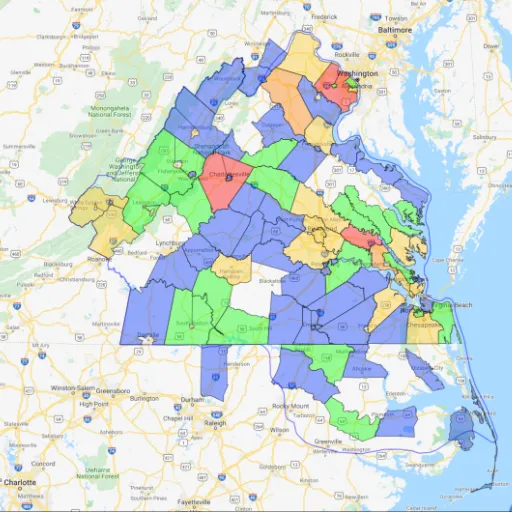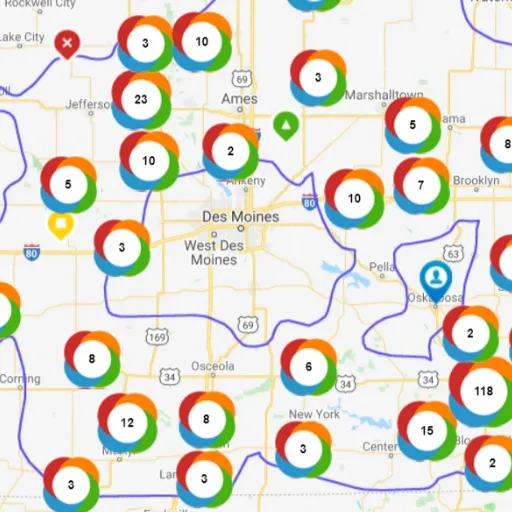Choosing the right generator size is crucial for ensuring your power needs are met efficiently, whether it’s for your home, business, or outdoor projects. However, determining the appropriate size can be a challenge, especially when trying to account for factors like wattage requirements, surge power, and appliance compatibility. That’s where a generator size calculator comes in. This article is designed to guide you in finding the perfect generator size calculator to suit your specific needs. By the end, you’ll understand how these tools work, why they’re indispensable, and how to use them effectively to take the guesswork out of your decision-making process.
How to Use a Generator Size Calculator for Accurate Results
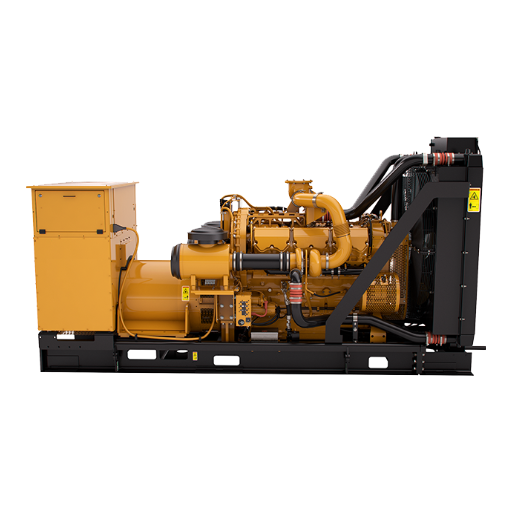
Steps to Calculate Your Power Requirements
The critical step in selecting the most appropriate generator is estimating your power requirements accurately. Make sure to follow these user-friendly steps to make the necessary calculations zap free.
- List All Important Devices and Appliances: Start by creating a detailed list of all the appliances, tools, and gadgets you plan to power up with the generator and provide their name, purpose, and mode.
- Identifying Running and Starting Surge Watts: For every device, starting watts and running watts should be recorded. Every device has a higher starting watt, which indicates higher initial energy needs, whereas running watts indicate energy needed for operational continuity.
- Calculation Of Powered Devices: Add together running wattages for every powered device around separately to get the total power required. Generators are expected to operate when the highest number figure on the running scales device is shown, which means energy spikes should be paid attention to as well.
- Consider Future Load Adjustments:Contemplate the fact that if you’re planning on getting more devices in the near future than now, mentally account for those needs alongside current day. Recommended buffer is ten to twenty percent on your existing power requirements as a safeguard blanket against gaps in demand levels and Proviso expansion.
- Input Data into a Generator Size Calculator: Go online and search for a generator size calculator. Make sure that the calculator is modern and reliable. Such tools enable you to enter appliance and power information, then obtain the suggested generator size automatically. Based on the inputs you provide, modern calculators incorporate algorithmic configurations that enable them to yield accurate recommendations.
- Evaluating the Results: Verify the recommendations against your manual calculations. Check if the generator size recommended can handle both the surge and steady state without going beyond the safety margins or efficiency boundaries.
These thorough procedures will ensure the generator is optimally scaled to avoid overloading while ensuring reliable performance during periods of peak power demand.
Common Mistakes When Using a Generator Calculator
- Failure to Account for Starting Wattage: A very common problem is ignoring the starting, or surge, wattage some appliances may need. Surge power is greater than the continuous power, which lasts only for the duration of the operation. Numerous appliances, including refrigerators and air conditioners, for example, also have a higher power requirement during the initial stage compared to when they are running continuously. If this is neglected, it can lead to selecting an undersized generator, which can end up causing tripped breakers, equipment damage, and other harms.
- Ignoring Future Power Needs: A gaping flaw that users tend to overlook by fixating on the immediate requirements is the users future needs to the generator which is more often than not powered by new appliances. The greater concern is that relying on the imagine loads could lead the users to not plan smartly resulting in lack of generator that has the capability expect as time passes and more power is drawn.
- Overstating Generator Efficiency: A broader assumption that generators can work effectively under every single condition without limitations is a critical, declares assumption that leads to complete underperformance. Efficiency is bound to change as factors such as altitude, temperature, and load balance, which drastically change the load. Changes like such should be incorporated into your planning so the worst-case scenario of overloading or underusing the generator does not happen.
- Not Considering Power Factor: Some types of electrical equipment, specifically inductive loads such as motors and compressors, exhibit a lower power factor that affects the generator’s capacity. Not including this factor could result in performance gaps and restrictions.
- No Alternative Plans or Redundancy: Often users do not think about planning for other scenarios. A generator in its design mode must carry out the peak demand but should leave room for things like unpredicted increases in load.
Generator calculators can greatly assist in harnessing power supply systems by providing accurate data under different scenarios. Avoiding errors such as these can ensure that your system remains reliable while being efficient.
What Factors Influence Generator Size?
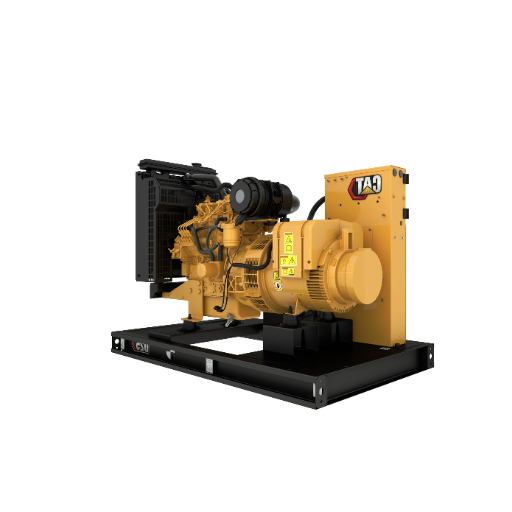
Evaluating Your Home’s Power Needs
To figure the correct size generator for your home, you need to evaluate your power requirement. Consider first the fundamental appliances and systems you aim to power during an outage. Priorities often include refrigerators, heaters or air conditioners, lights, medical devices, and phones. All these appliances consume certain wattages which are indicated on name plates or user manuals.
After identifying critical devices, evaluate surge wattage as well as peak temporary wattages that appliances may draw upon during device start-up. For instance, a running wattage refrigerator will usually require up to three times that during start-up. Surge use will form the baseline generator selection needs to be more powerful to start the appliance boost.
Furthermore, the latest technologies in generator development allow real-time evaluation and monitoring of power consumption, aiding load assessments. These modern tools, powered with virtual calculators, can simulate different outage situations, enabling power requirement calculations.
Considering Wattage and Electrical Load
While determining wattage and electrical load requirements, both continuous and starting power demands should be examined. Continuous wattage is defined as the power spent while an appliance is working, whereas starting wattage involves the excess power needed at the beginning of a cycle. This is especially true of motor-driven devices like refrigerator or air-conditioners. This difference is important in guaranteeing that the generator will not over load peak demand.
Technological advancements provide new ways to estimate precise load calculation, including smart appliances and IoT-enabled electrical panels that provide real real-time estimate of energy, which is vital in monitoring patterns for consumption. Moreover, these systems work alongside virtual power simulations, which allow users to create countless predictive models for predicting energy requirements with ease compared to traditional estimation methods.
Detailed load tables based on electrical planning provide a definite estimate for planning purposes. Load categorization allows allocation of average continuous and surge wattage values. Optimal generator selection and operation is ensured for any application by grasping these technical features.
The Role of Appliance Usage in Generator Sizing
The function of each appliance will heavily indicate the generator size required, as the usage of a generator will indicate the total electric demand that needs to be met. The working of every appliance comes with a power rating, which is a unit of power in watts or kilowatts. The operational sum of all appliances with an order of sum gives the minimum generated maximum electricity required during a definite time. The majority of air conditioning devices, such as refrigerators, sump pumps, have significant running wattage, which demands further looking after intake wattage is substandard.
Other appliances such as HVAC systems, parallel running water heaters old have enormous power ratings. Similar experts suggest, based on their power rating, that they also run on an identical rating. Alongside wireless device rating, it becomes imperative to learn their entire working behavior and self-dependency. Nonreliable appliances like industrial pulsing equipment or a washer also require their kw rating for accurate power control. There is interaction that is anticipated to take place between all these and creates multiples where their runtime occur, and the idea is that their runtimes, in the case of these two processes, are solely dependent on time.
The planners and engineers can optimize generator selection by using handy tools to model the data about generator appliance usage. Following this approach will guarantee the availability of the desired output, a prolonged active life of the unit, and desired efficiency levels in energy consumption. With these insights added into decision-making when calculating the generator, precision in decision-making is improved while the risks of under- or overcapacity are mitigated.
How to Determine Your Power Requirements Efficiently
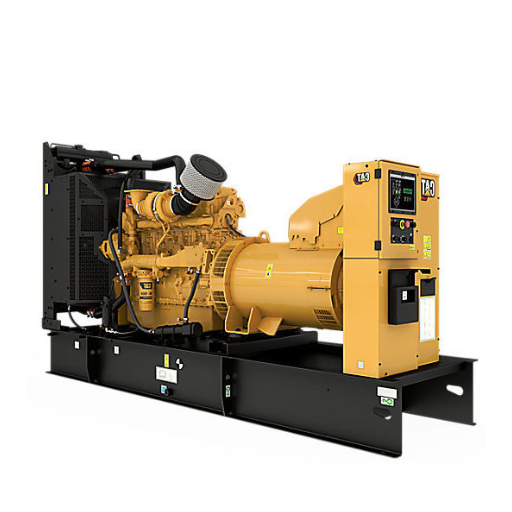
How to Estimate Your Power Needs
Knowing how much energy you need requires a thorough and methodical approach to estimates, taking into consideration every component of the energy system and its possible usage patterns. Here is a step-by-step process to achieve an accurate estimate:
- Make an Inventory of All Devices: Start with an inventory all devices, appliances, and tools that the generator will power. Things like HVAC systems, computers, lighting, and other equipment falls under this category. For each item, check the wattage.
- Determine Starting and Running Wattage: The starting or ‘in-rush’ wattage appliances use greatly differs from the running (or ‘rated’) wattage. Take for example; air conditioning units, pumps, and refrigerators require higher wattage numbers on start.
- Calculate Total Wattage: Running wattage models can be added together, assuming they’re not used at the same time. Add as well startup wattage for devices that need it and check whether the generator can accommodate peak power requirements. In most cases, having a safety buffer (usually 20 percent above the estimated total wattage) helps accommodate for any unforeseen scenario.
- Create Scenarios: As with any device, a consideration for its level of usage needs to be accounted for, keeping in mind that not all appliances will run at full capacity non-stop. For example, medical devices or servers may need constant power, but other appliances can afford to run on power-saving mode.
- Make Use of Tools and Resources: Calculating your power needs doesn’t have to be difficult. Digitally available tools, such as generator wattage calculators, compile data from numerous appliances to provide customized suggestions. Moreover, advancements in load monitoring systems have made it possible to monitor and predict power usage in real-time.
- Examine Industry Guidelines Provides: Use industry norms and benchmark facts to ensure that you validate your calculations. The National Electrical Code (NEC), for example, provides structures defining safe and power-efficient measures.
Combining these steps with the latest technologies and analytics can aid in optimizing how the generator is selected and utilized. Making sure that there is operational effectiveness, virtually no chances of interruption to power, and dependable service life.
Differences Between Running Watts and Starting Watts
Evaluating a generator for your electrical needs will require you to distinguish between starting watts and running watts. The former indicates how much power will be supplied to an appliance or equipment that is actively in operation. Also known as rated watts, running watts depict the power an appliance requires to maintain smooth and constant operation while using the appliance.
Induction motors are motors that have their power requirement coming from the equipment, instead of being supplied externally. Starting watts, also called surge watts, are the additional temporary power that inductive motors draw further in the initial stages of their draw. Power tools, refrigerators, and air conditioners are some examples of appliances with electric motors. The running wattage of an appliance will always be lower than its surge wattage due to the additional power appliances need to reach optimal working conditions. Often, surge wattage can exceed 2-3 times the running wattage in considerable equipment.
Both numbers need to be considered when determining power requirements. If the starting wattage of devices is not included, the generator may become overloaded, resulting in performance issues or power interruptions. For adequate applications, check equipment spec labels and technical documents to pinpoint specific wattage values. Numerous generator models nowadays furnish specifications with both running and starting watt ratings, empowering users to make better choices designed to fit energy requirements.
Choosing Between a Standby Generator and a Portable Generator
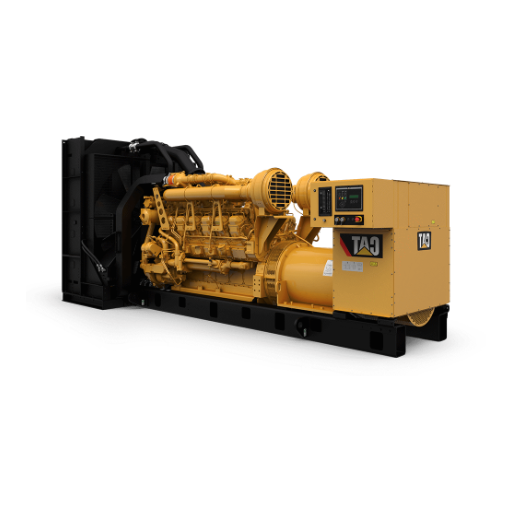
Advantages of a Home Standby Generator
Buyers may prefer a home standby generator because these units are more reliable compared to other alternatives. Furthermore, their power is usually long-term as home standby generators automatically activate during an outage. Therefore, it assures people of an uninterrupted energy supply. The systems are permanently installed and hardwired in form a house’s electrical system. Advanced modern standby generators have incorporated technology that is more advanced compared to the previous models, enabling them to have load management capabilities, helping with prioritization of critical systems such as HVAC, Refrigeration, or even medical devices, which have to be protected from the depletion of power.
Generally, these devices receive their fuel from natural gas or propane. This completely does away with the trouble of needing to refuel manually during extended outages, as they offer a constant supply. Because of the higher power capacity, they are also a favorite of jetters or people who have large households with high demand. People now have access to many models that have smart monitoring systems incorporated into them, making it easy for consumers to check performance, monitor maintenance needs, and check their outages remotely through mobile applications.
Despite the need for bigger investment in the beginning, once purchased, the device increases standby generators in areas where an individual experiences frequent and long power interruptions, making it a must-have purchase due to frequent outages experienced. The added reliability, lifespan, and convenience, especially in places that experience frequent power disruptions, frequently make home standby generators indispensable.
Benefits of a Portable Generator for Emergencies
When you experience sudden loss of power, portable generators can be great for backup electricity as they don’t require any additional costs or complicated setups. Unlike stationary units, portable models offer more flexibility due to their lightweight design and ease of movement. They can power vital devices which includes refrigerators, lights, medical equipment, heaters, and more, aiding important functions during critical times.
Furthermore, advancements in technology have improved the efficiency and safety of portable generators, allowing for more reliable use. Inverter technology ensures the power output is stable with low Total Harmonic Distortion (THD) which is ideal for fragile devices including smartphones and laptops. Many models include additional safety measures such like carbon monoxide detection which automatically stops the generator at dangerous levels, decreasing the risk of hazards.
Based on the data, portable generators usually range between 2000 to 10,000 watts. Models with higher outputs can sustain several devices working at the same time. Their lower cost, in comparison to fixed standby systems, makes them attractive to homeowners and small business owners, especially in areas where power outages are infrequent yet disruptive. But, the portability needs to be offset against total runtime because most models require frequent refueling with gasoline, diesel, or propane, thus restricting their usefulness during long-term power outages.
When to Opt for a Whole House Generator
For those living in areas with extensive outages, an uninterrupted power supply is a necessity—this makes buying a whole house generator a major investment. Unlike portable generators, a whole-house generator system is permanently installed and requires integration with the home’s electrical structure. This system is often coupled with an automatic transfer switch (ATS) that serves to automatically engage the generator during power failures. The generator will power essential household appliances such as HVAC systems, refrigerators, and medical equipment, as well as non-essential but convenient devices.
Individuals using medical devices, having a home business, or living in areas with extreme weather conditions will find a whole-house generator beneficial. The system will consistently supply power as required. The modern whole house generators usually operate on natural gas or propane, which does not require manual refueling—this enables longer runtime. Furthermore, newer models fulfill regulations on emissions, are more fuel-efficient, and are environmentally friendly.
The costs of a whole house generator, both upfront and for installation, is far greater than a portable generator. However, a whole house generator brings long term benefits due to its durability, its ability to power an entire home, and automated features. When purchasing a whole house generator, homeowners should assess their fuel options, the average outages in their area, and the energy consumption of their home.
Why Is a Generator Size Calculator Essential for Backup Power?

The Importance of Matching Power Equipment to Generator Capacity
Matching power devices to a generator’s output appropriately is critical for safe, reliable, and efficient operation during power outages. Underperformance, damage, or destruction of the generator and any devices attached to it may occur if there is a mismatch between the equipment load and the generator’s output. Each generator comes with a starting wattage (the power to start motor-driven appliances) and running wattage (the power needed to sustain an activity).
Overloading happens when the connected appliances’ power consumption surpasses the generator’s peak output threshold. This could then result in overheating or automatic shutdown. Undervaluing is another problem where a generator is allowed to run at minuscule loads for a prolonged duration. This can also lead to carbon buildup, loss of efficiency, and shortening of the lifespan of the equipment. With proper energy distribution in mind, homeworkers can gauge the appropriate energy output their household requires with the help of detailed load calculations and a generator size calculator.
High demand appliances like HVAC systems or water heaters which have an accompanied surge wattage – starting watts – that is much higher than the operational watts. The needs of such appliances require surging generators. Determining the appliance load limits such as the combined amount used concurrently during a blackout helps avoid over loading outages. Knowing such intricacies will ensure ideal output as well as durability from the generator.
Avoiding Over– or Under-sizing Your Backup Generator
It is important to select a backup generator of the correct capacity in order to maintain efficiency and reliability during outages. An undersized generator poses the risk of overloading which results in equipment failure, overheating, and potential damage to the connected devices. On the other hand, oversized generators consume excessive fuel, operational costs, and drastically underperform on account of underutilized engine capacity.
Accurately estimating the generator size requires calculation of essential appliances and systems’ total wattage demand, starting and running wattage included. An example would be motors, which have starting and operating wattage differences .completely different. Surge demands can be calculated efficiently with the help of professional technicians.
In addition, improvements in inverter based generator technology makes powerful backup solutions customizable to individual needs. They also mitigate fuel and crucially, operational inefficiencies. Backup power systems are an investment, and sizing in conjunction with regular maintenance will provide the utmost reliability, protect longevity, and enhance fuel savings.
Planning for Future Power Outages with the Right Generator
When choosing the right type of generator while strategically planning for power outages, there are major factors to consider regarding dependability and efficiency. One of the most important factors is the load capacity—calculating peak and continuous power supply requirements prevents overloading or underutilizing the generator. For example, a residential property may need generators that can support HVAC systems, refrigerators, and lighting, whilst commercial facilities usually require high-capacity generators tailored to industrial equipment and IT infrastructure.
Moreover, type of fuel and the fuel itself are important as well. In the modern world, gasoline, diesel, propane, and natural gas are the four primary fuels that modern day generators rely upon. Each type has unique benefits propane systems burn clean and can be stored long term, but during outages, solar fuel becomes inaccessible. While on the other hand, petrol generators are always reliable. Having unlimited fuel from the start means they support immeasurable weight while having unmatched durability.
Next generation features would include automated control and remote control features due to advancements in monitoring technology. Generators with real time diagnostics can notify users of issues like coolant depletion or irregular power loads which can cause unnecessary downtime during mission critical operations. These features guarantee minimized advanced operational miss during critical periods.
Important factors in noise ordinances as well as emission regulations also have to be considered while integrating a generator and modern efficiency standards. Newer models have advanced sound dampening technology that can reduce emissions and noise pollution while maximizing the power. Energy during unexpected outages is ensured with these factors planned around.
References
Frequently Asked Questions (FAQs)
Q: What is a wattage calculator, and why is it important when choosing a generator?
A: A wattage calculator is a tool that helps determine the total power requirements of your appliances. It’s important because it ensures you choose the right size generator to meet your specific electrical requirements, allowing you to run all appliances at the same time if needed.
Q: How do I determine the right home generator for my needs?
A: To find the right home generator, consider factors such as the total wattage of appliances you plan to run, your home’s square footage, and whether you need to use load management. A certified electrician can verify your specific electrical requirements before purchasing.
Q: What factors should I consider in a generator sizing tool?
A: When using a generator sizing tool, consider the minimum generator capacity needed, the ability to run all appliances simultaneously, and the specific details of your home. The tool is intended for estimating purposes, so consulting with an electrician is recommended for exact power requirements.
Q: Can I use a calculator for generators to find the right size generator?
A: Yes, a calculator for generators can help determine the right size generator by assessing your power needs. However, it’s best to recommend having a licensed electrician confirm your calculations to ensure accuracy.
Q: Should I consult a certified electrician when choosing a generator?
A: Yes, consulting a certified electrician is highly recommended to verify your specific electrical requirements before purchasing a generator. They can provide valuable insights and ensure the chosen generator meets all your needs.
Q: Is it necessary to consider the square footage of my home when selecting a generator?
A: Yes, the square footage of your home can influence the generator size you need, especially if you plan to run multiple appliances at the same time. Larger homes may require a generator with a higher capacity.
Q: What is the importance of using load management with a generator?
A: Load management is important as it allows you to run all necessary appliances without overloading the generator. Proper load management can ensure efficient energy use and prevent damage to your appliances and generator.
Q: Can I run my AC and other appliances at the same time with the right size generator?
A: With the right size generator, you should be able to run your AC and other appliances at the same time. Ensuring the generator’s capacity matches your total power needs is crucial, and using a sizing tool can help estimate this.
Q: What does it mean when a generator sizing tool assumes certain conditions?
A: A generator sizing tool assumes standard conditions for estimating power needs, such as typical appliance usage. For precise requirements, it’s best to consult with a professional who can account for the exact power requirements and details of your home.






